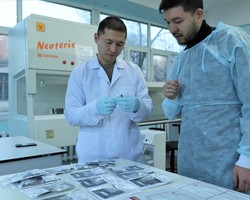New WHO tools launched to help hospitals manage surge in COVID-19 patients

WHO
Two new WHO tools launched today will assist health planners across the WHO European Region to prepare for the surge in COVID-19 patients needing acute and intensive care in hospitals as cases continue to climb.
The planning tools will help countries to visualize and estimate the health workforce necessary for acute and intensive care over the course of the pandemic, and to project the timing and severity of the peak of the outbreak.
The Health Workforce Estimator will assist countries in estimating the numbers of health workers needed based on projected numbers of moderate, severe and critical patients per day. This understanding of the potential workload from COVID-19 will also allow countries to anticipate and better address the mental health-care needs of health workers. Additionally, it will help health service managers calculate the amounts of personal protective equipment and other resources required to safeguard the physical health of staff.
The Adaptt Surge Planning Support Tool, intended for policy-makers and senior planners, focuses on surge planning. It will help users to estimate the number of beds required for moderate, severe and critical care, the dates of predicted bed shortages and the detailed human resources needed.
Guidance on activating surge capacity
The tools are accompanied by technical guidance which outlines actions and policies to increase available hospital capacity for an influx of COVID-19 patients, while continuing to maintain essential services.
The document sets out 4 strategic actions that unfold into 21 policy recommendations, and includes emergent practices from 12 countries in the WHO European Region. The actions are structured around the following 4 areas which are core to dealing with rapidly increasing numbers of patients in acute and intensive care.
- Staff – ensuring sufficiently numerous and appropriately skilled health- and social-care workers
- Space – focusing on making adequate space in hospitals and other structures available to provide care
- Supplies – guaranteeing sufficiency of supplies and equipment both for patient care and health worker safety
- Systems – coordinating action to respond to the surge in the demand for services
Technical support on using the tools and guidance are available from WHO/Europe and WHO country offices.



